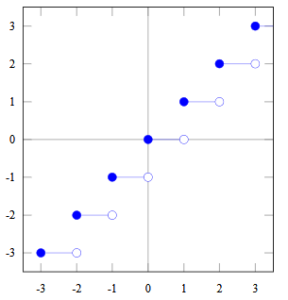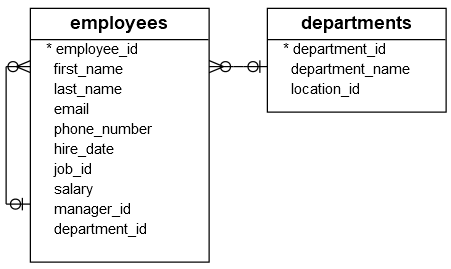Summary: in this tutorial, you will learn how to use the SQL FLOOR() function to return the largest integer less than or equal to the specified number.
The FLOOR() function allows you to return the largest integer number less than or equal to the specified number.
The syntax of the FLOOR() function is as follows:
FLOOR(numeric_expression)Code language: SQL (Structured Query Language) (sql)In this syntax, the FLOOR() function accepts a literal number or a numeric expression that evaluates to a number.
The argument can be the exact numeric type or floating-point type, which determines the type of the return number.
The following picture illustrates the FLOOR() function:

SQL FLOOR() function examples #
See the following examples of using the FLOOR() function to understand how it works.
Using SQL FLOOR() function for a positive number #
The following example uses the FLOOR() function for a positive number:
SELECT FLOOR(10.68) result;Code language: SQL (Structured Query Language) (sql)The return value is 10 because it is the largest integer less than or equal to 10.68
Output:
result
--------
10Using FLOOR() function for a negative number #
The following example uses the FLOOR() function for a negative number:
SELECT FLOOR(-10.68) result;Code language: SQL (Structured Query Language) (sql)In this example, because the largest integer less than or equal to -10.68 is -11, the FLOOR() function returned -11:
result
--------
-11Using FLOOR() function with table data #
We’ll use the employees and departments table from the sample database for the demonstration purposes:

The following statement finds the average salary of employees in each department. It uses the FLOOR() function to get the average salary as integer numbers:
SELECT
department_name,
FLOOR(AVG(salary)) average_salary
FROM
employees e
INNER JOIN departments d ON d.department_id = e.department_id
GROUP BY
department_name
ORDER BY
department_name;Code language: SQL (Structured Query Language) (sql)Output:
department_name | average_salary
------------------+----------------
Accounting | 10150
Administration | 4400
Executive | 19333
Finance | 8600
Human Resources | 6500
IT | 5760
Marketing | 9500
Public Relations | 10000
Purchasing | 4150
Sales | 9616
Shipping | 5885Code language: PHP (php)Summary #
- Use the
FLOORfunction to find the largest integer number less than or equal to the specified number.